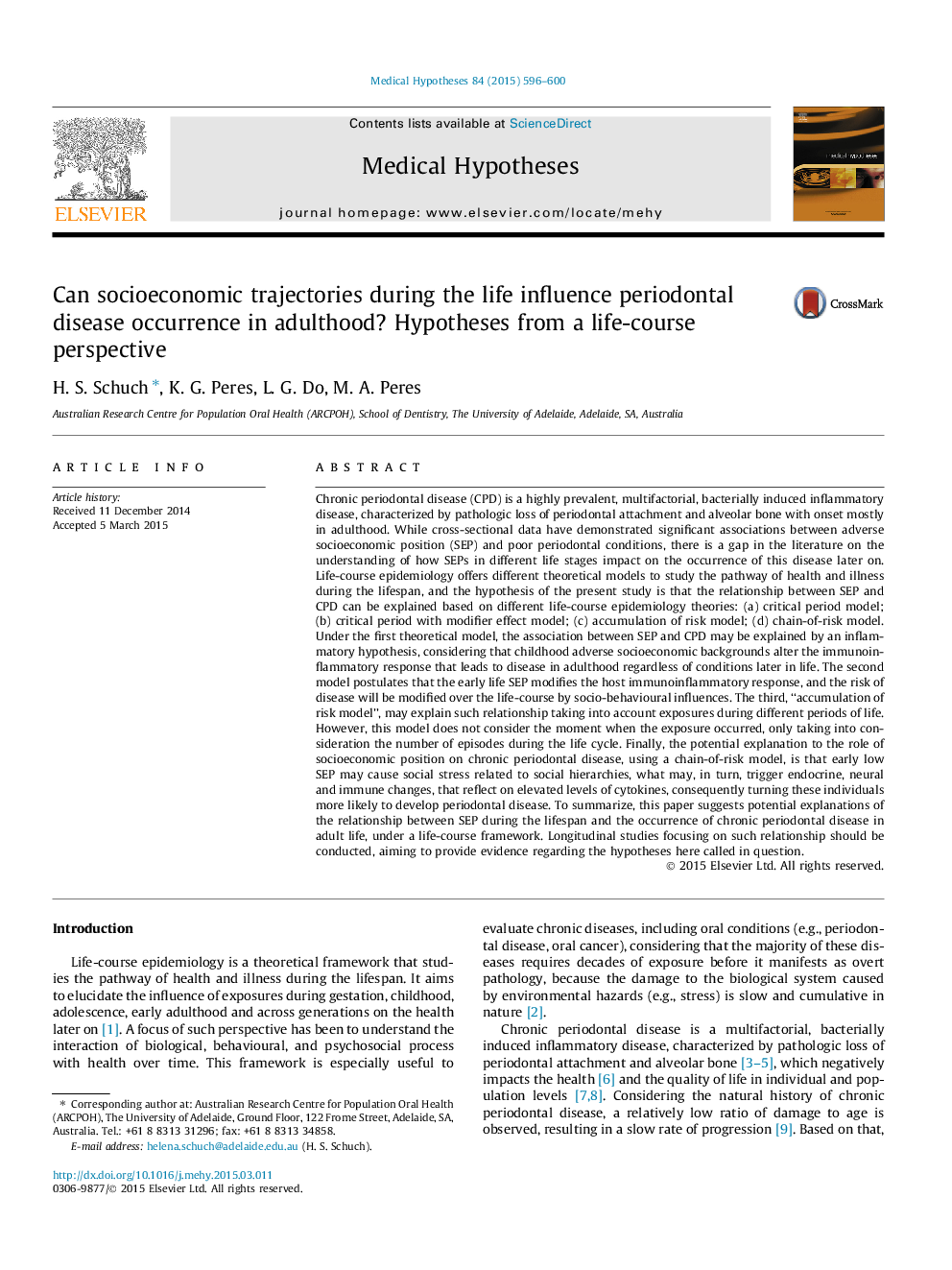| کد مقاله | کد نشریه | سال انتشار | مقاله انگلیسی | نسخه تمام متن |
|---|---|---|---|---|
| 2489011 | 1115003 | 2015 | 5 صفحه PDF | دانلود رایگان |
Chronic periodontal disease (CPD) is a highly prevalent, multifactorial, bacterially induced inflammatory disease, characterized by pathologic loss of periodontal attachment and alveolar bone with onset mostly in adulthood. While cross-sectional data have demonstrated significant associations between adverse socioeconomic position (SEP) and poor periodontal conditions, there is a gap in the literature on the understanding of how SEPs in different life stages impact on the occurrence of this disease later on. Life-course epidemiology offers different theoretical models to study the pathway of health and illness during the lifespan, and the hypothesis of the present study is that the relationship between SEP and CPD can be explained based on different life-course epidemiology theories: (a) critical period model; (b) critical period with modifier effect model; (c) accumulation of risk model; (d) chain-of-risk model. Under the first theoretical model, the association between SEP and CPD may be explained by an inflammatory hypothesis, considering that childhood adverse socioeconomic backgrounds alter the immunoinflammatory response that leads to disease in adulthood regardless of conditions later in life. The second model postulates that the early life SEP modifies the host immunoinflammatory response, and the risk of disease will be modified over the life-course by socio-behavioural influences. The third, “accumulation of risk model”, may explain such relationship taking into account exposures during different periods of life. However, this model does not consider the moment when the exposure occurred, only taking into consideration the number of episodes during the life cycle. Finally, the potential explanation to the role of socioeconomic position on chronic periodontal disease, using a chain-of-risk model, is that early low SEP may cause social stress related to social hierarchies, what may, in turn, trigger endocrine, neural and immune changes, that reflect on elevated levels of cytokines, consequently turning these individuals more likely to develop periodontal disease. To summarize, this paper suggests potential explanations of the relationship between SEP during the lifespan and the occurrence of chronic periodontal disease in adult life, under a life-course framework. Longitudinal studies focusing on such relationship should be conducted, aiming to provide evidence regarding the hypotheses here called in question.
Journal: Medical Hypotheses - Volume 84, Issue 6, June 2015, Pages 596–600
